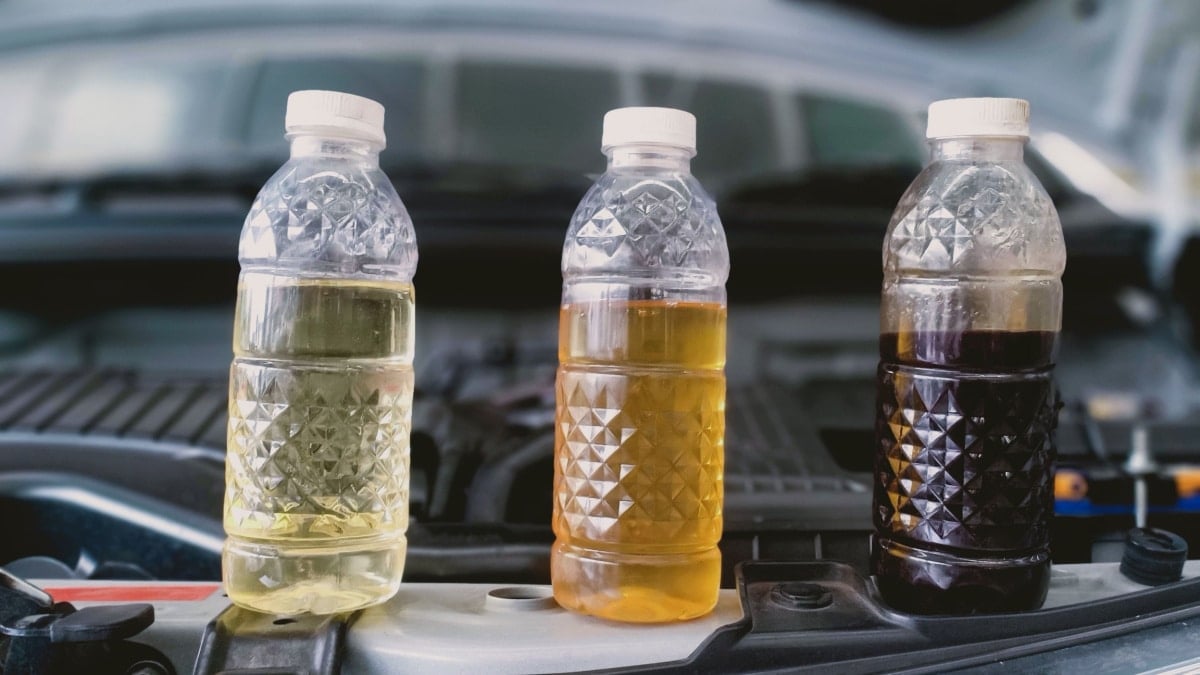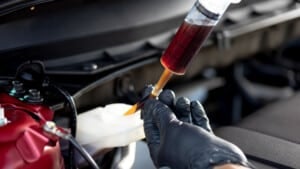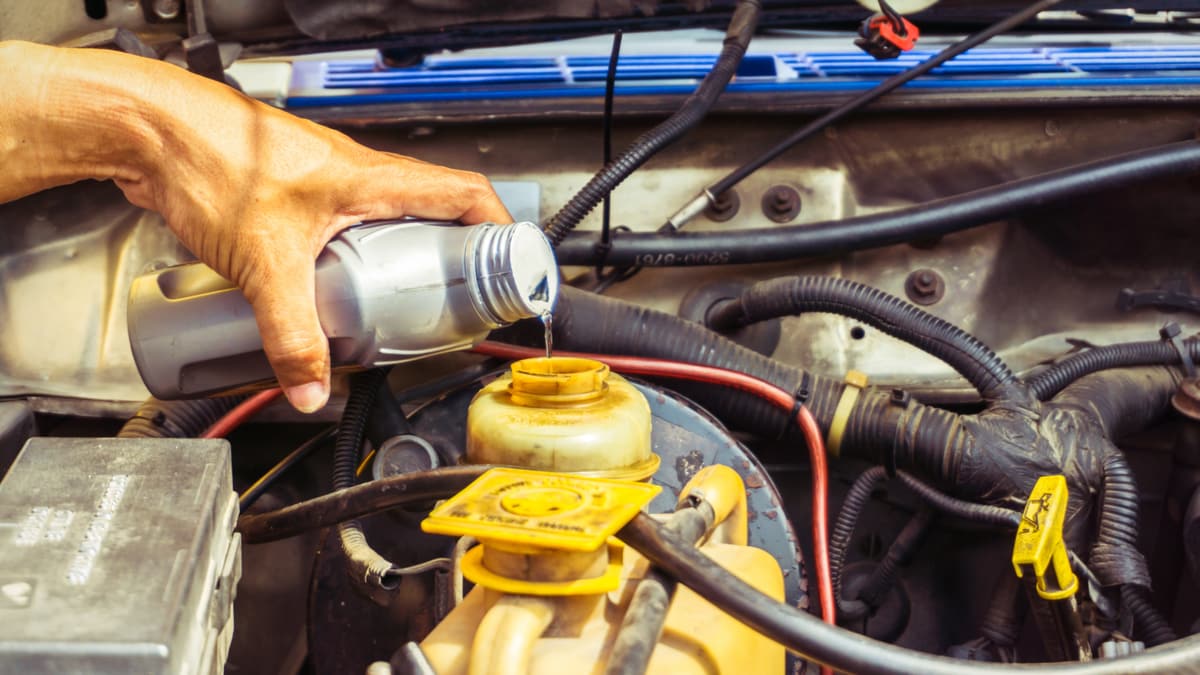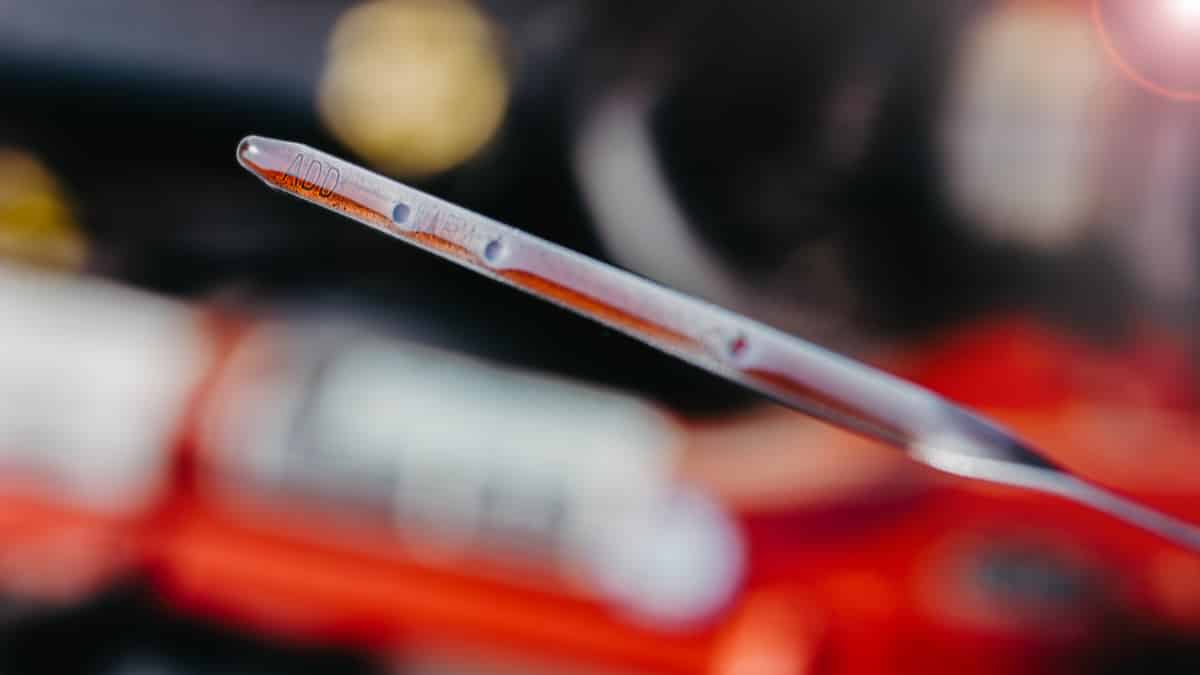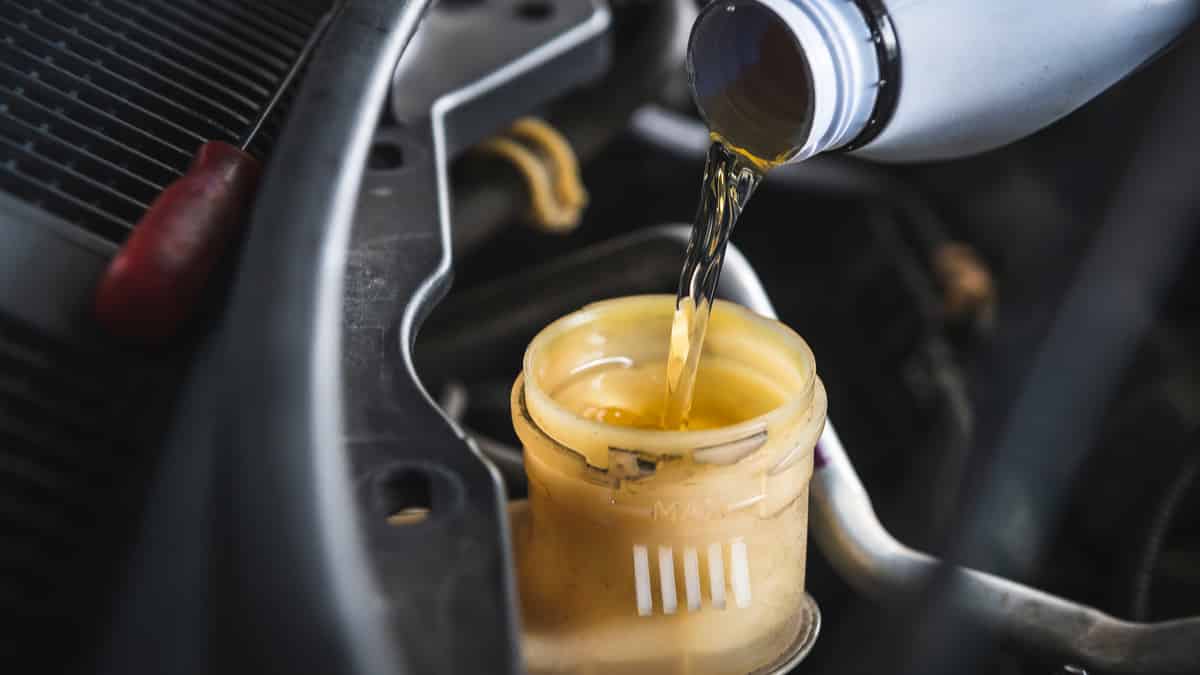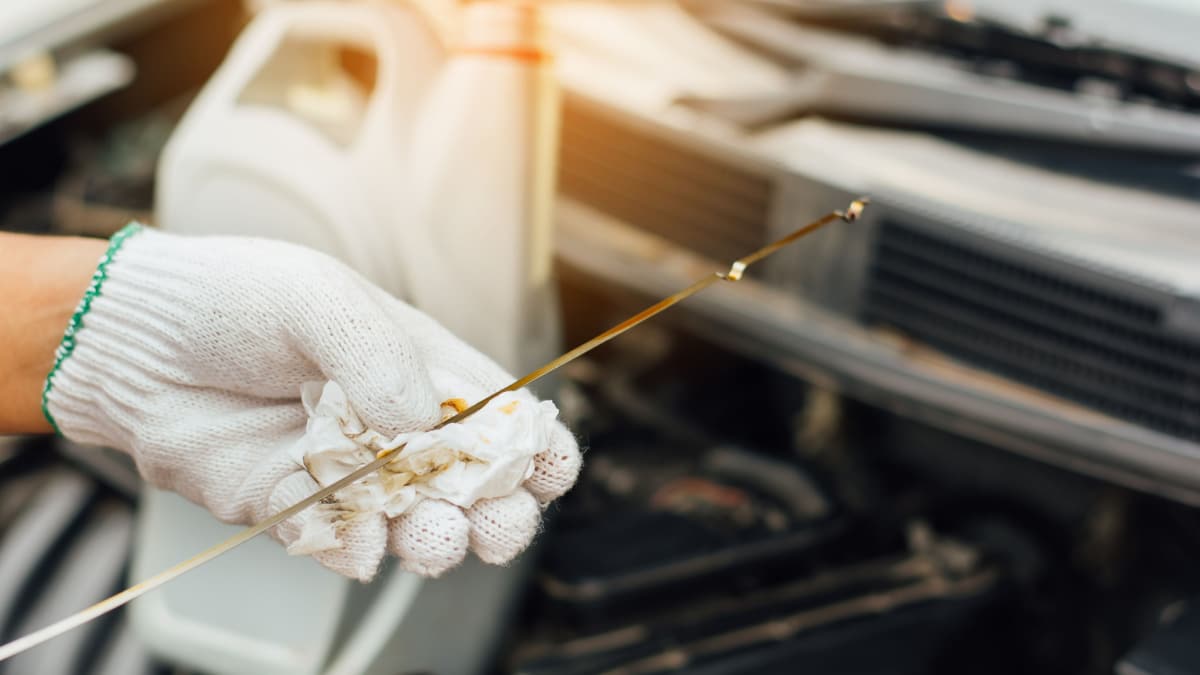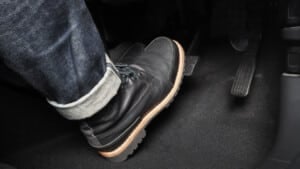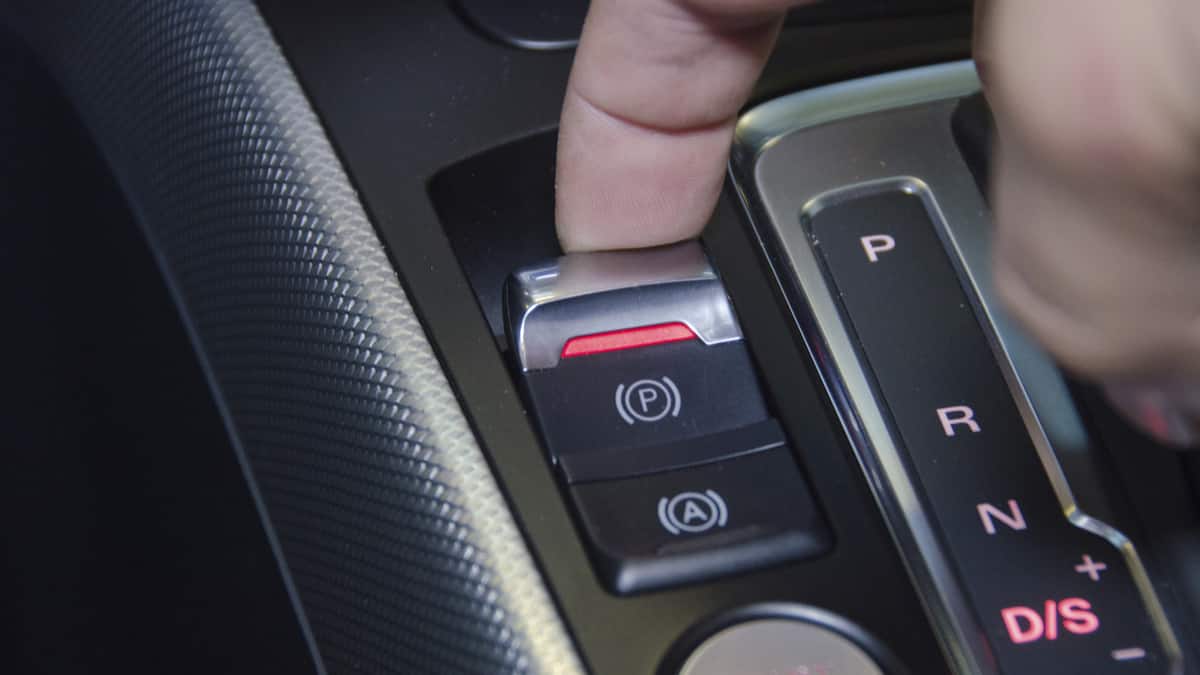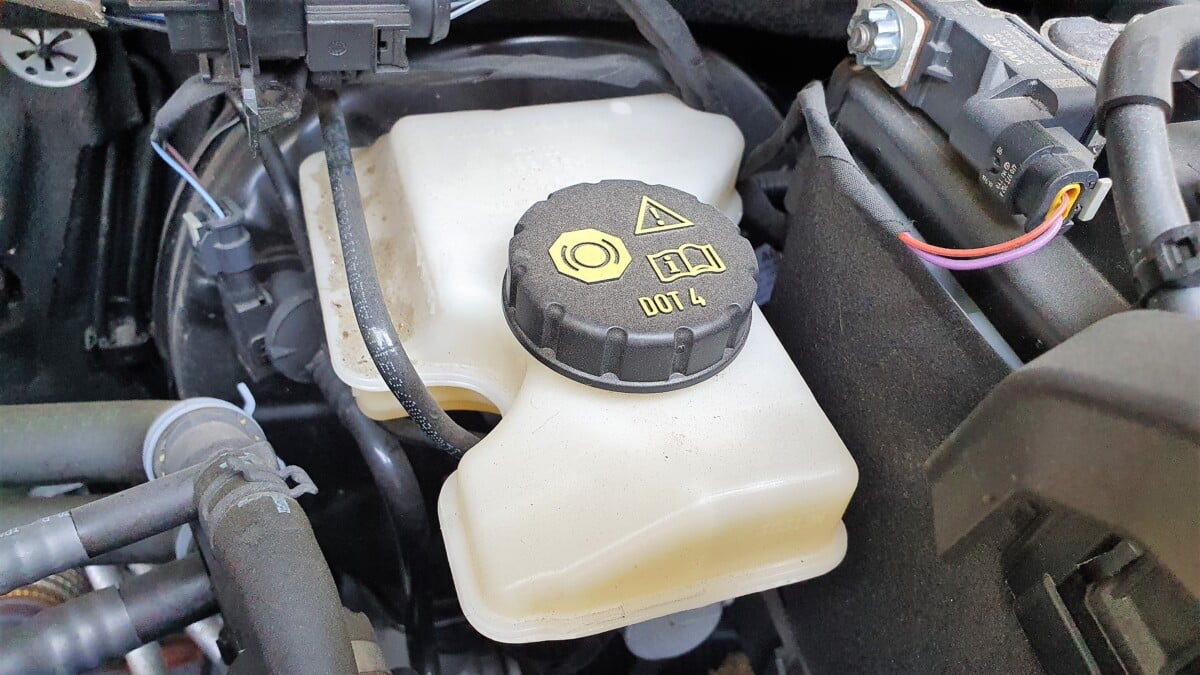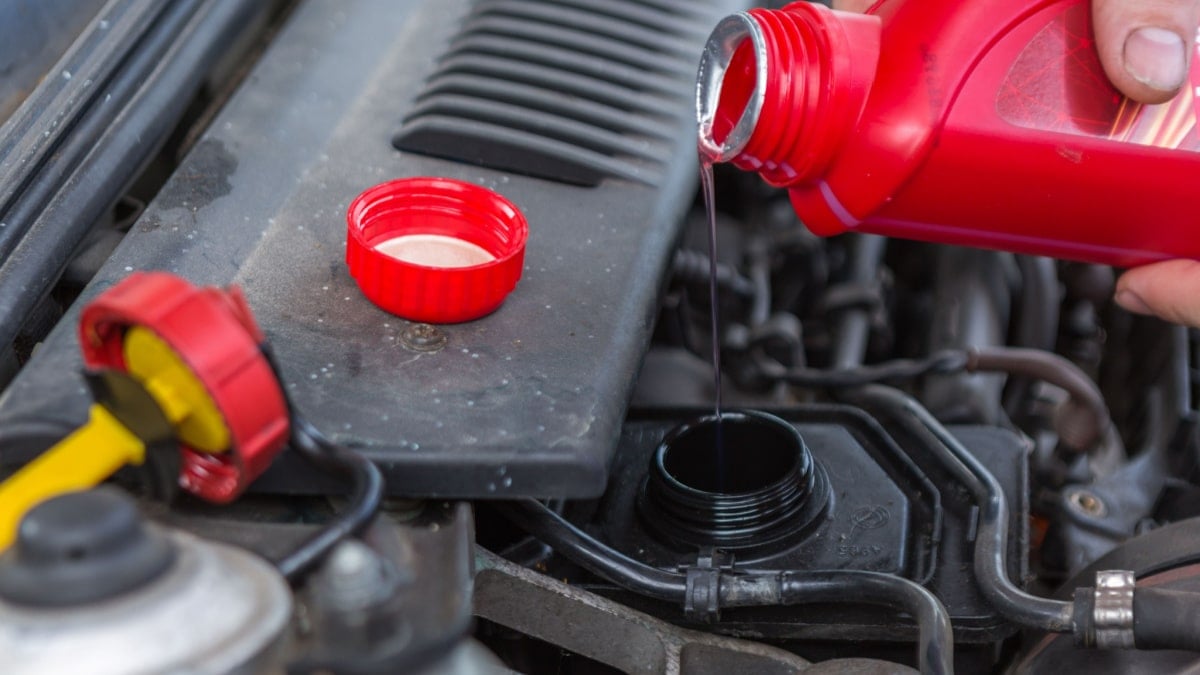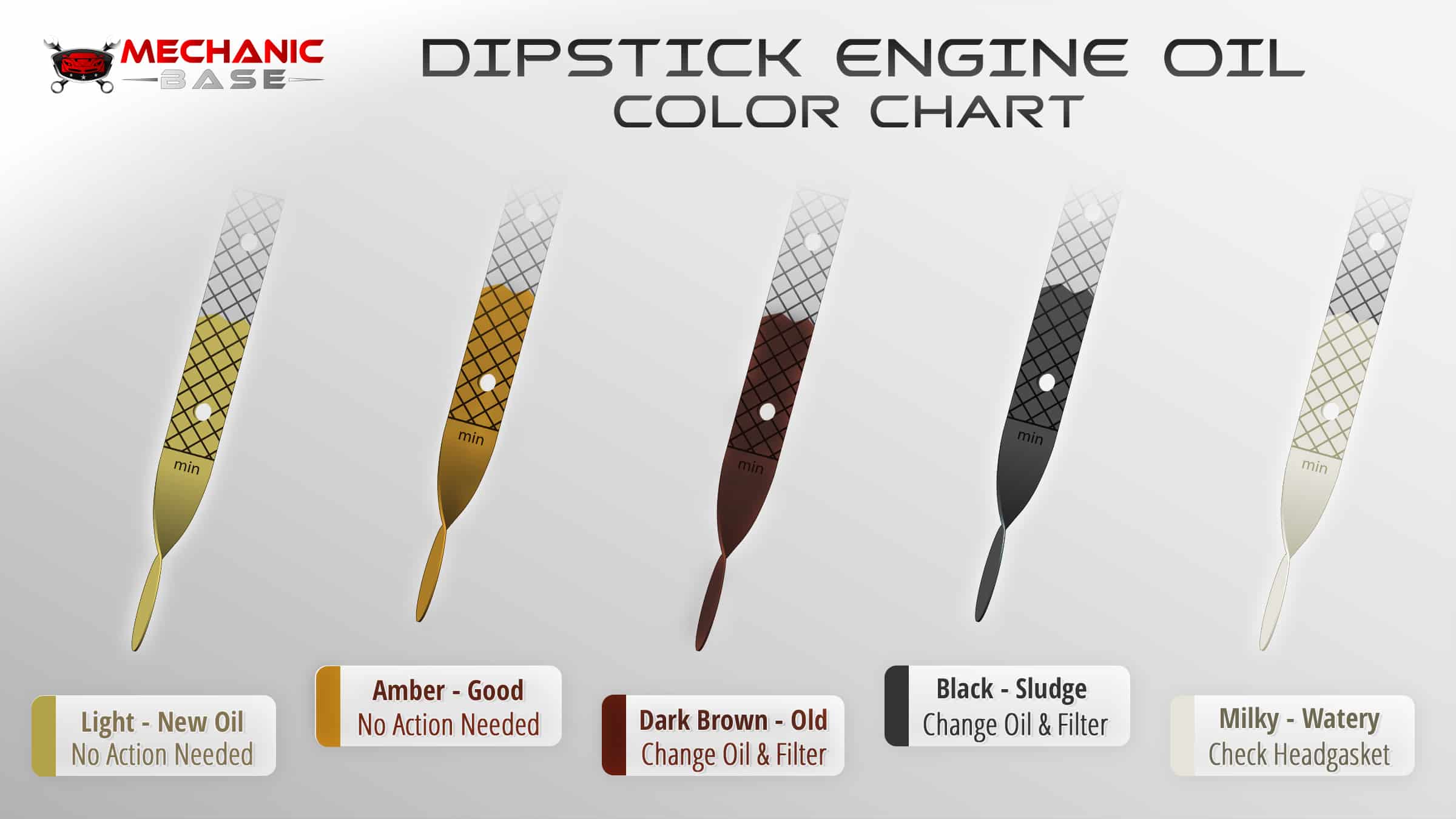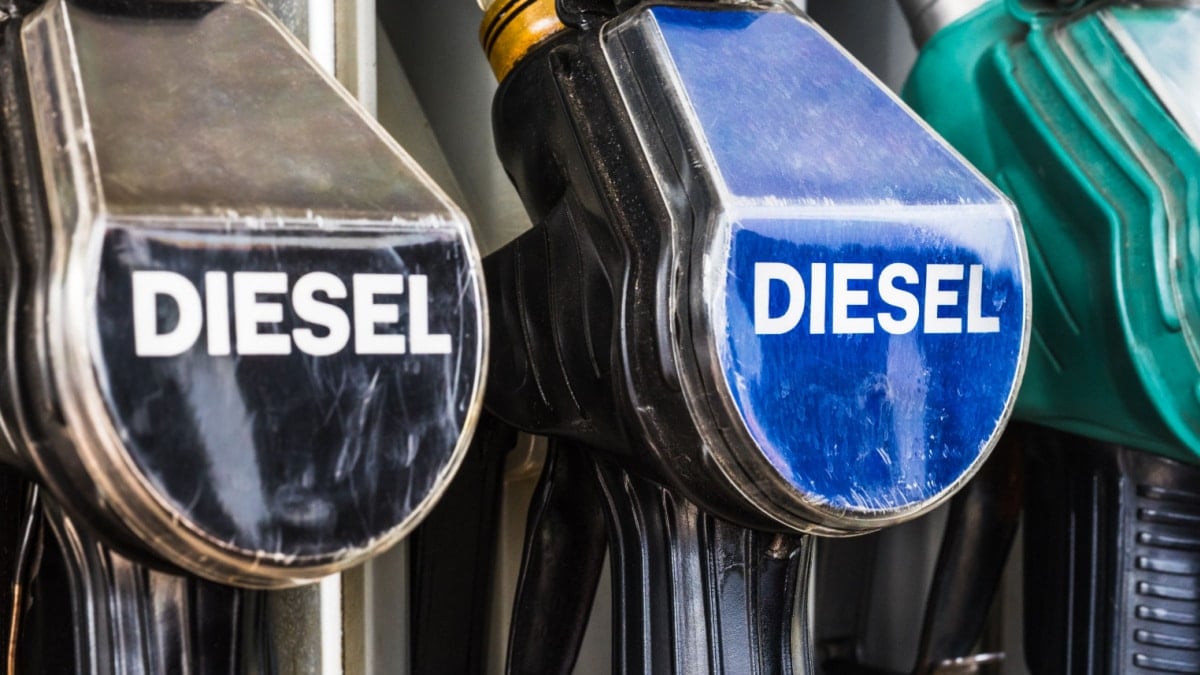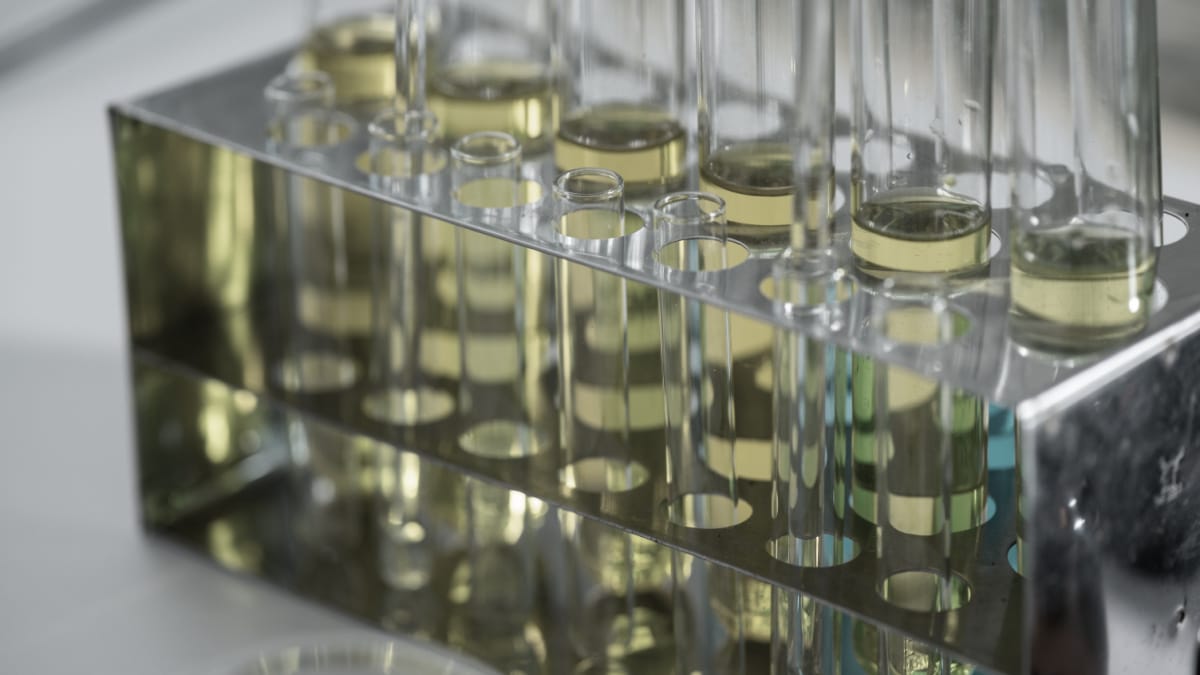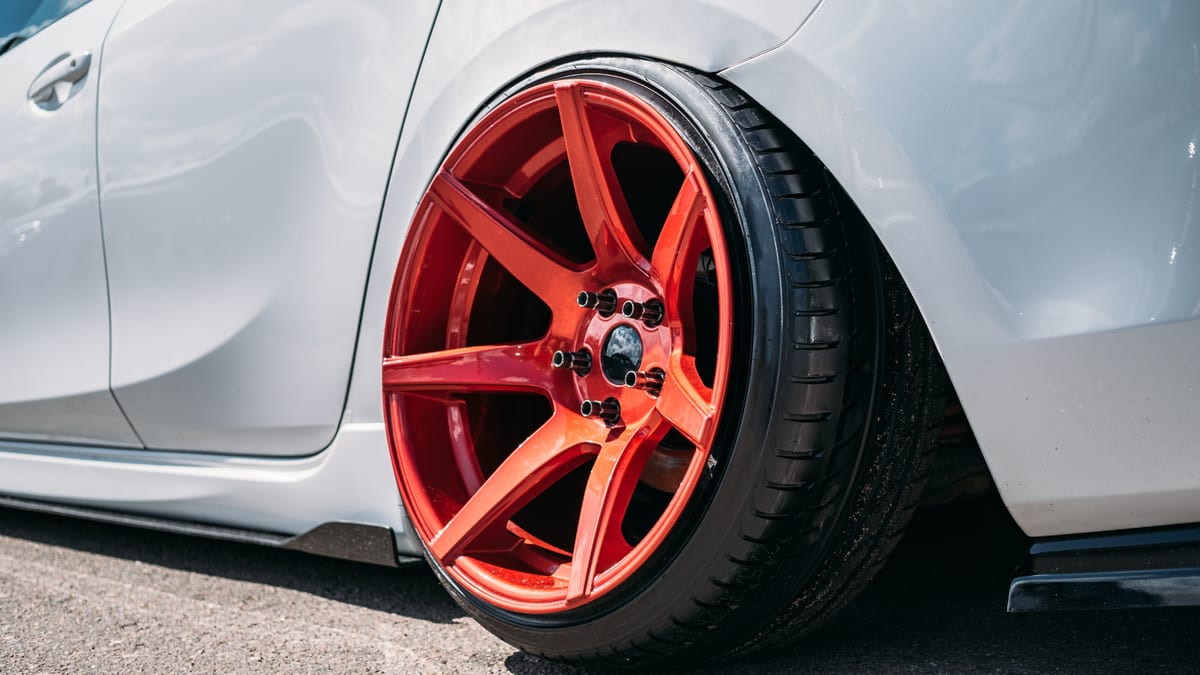The brake system needs fluid to ensure the car stops when you push the pedal. Without it, the brakes wouldn’t work. Yet, many drivers don’t know what this fluid looks like or why it’s important to change it regularly. So, what color is brake fluid, and why should you care?
In this article, we answer your top brake fluid questions. We also show you how to identify brake fluid and determine what type your vehicle uses. At the end of the guide, you’ll find some brake fluid FAQs that get answered.
What Color Is Brake Fluid?
Brake fluid comes in different colors, depending on what type your car uses. It can be clear, blue, green, red or amber-colored, but a clear yellow-colored is the most common for fresh brake fluid. It’s easy to spot through the transparent reservoir found in the engine compartment. This reservoir shows you when more brake fluid is needed.
However, brake fluid also turns brown or black when it’s old. If it becomes dark, it means that it’s time to change the brake fluid. With contaminants in the system and the fluid broken down, it won’t be able to apply pressure as needed to stop the car.
How To Identify Brake Fluid

In your vehicle, there are many different fluids being used. It’s important for you to know the difference between engine oil, transmission fluid and brake fluid. Normally, you can tell the difference based on the color and where it comes from. Here are a few examples of the different colors you may see.
- Brake Fluid: Normally amber or clear, but can be blue-green or red
- Engine Oil: Light brown to black
- Transmission Fluid: Red or brown
- Power Steering Fluid: Red, brown or clear
- Coolant: Orange, green, pink or blue-green
RELATED: Car Leaking Fluid: Causes and How to Identify The Liquid
Different Brake Fluid Types
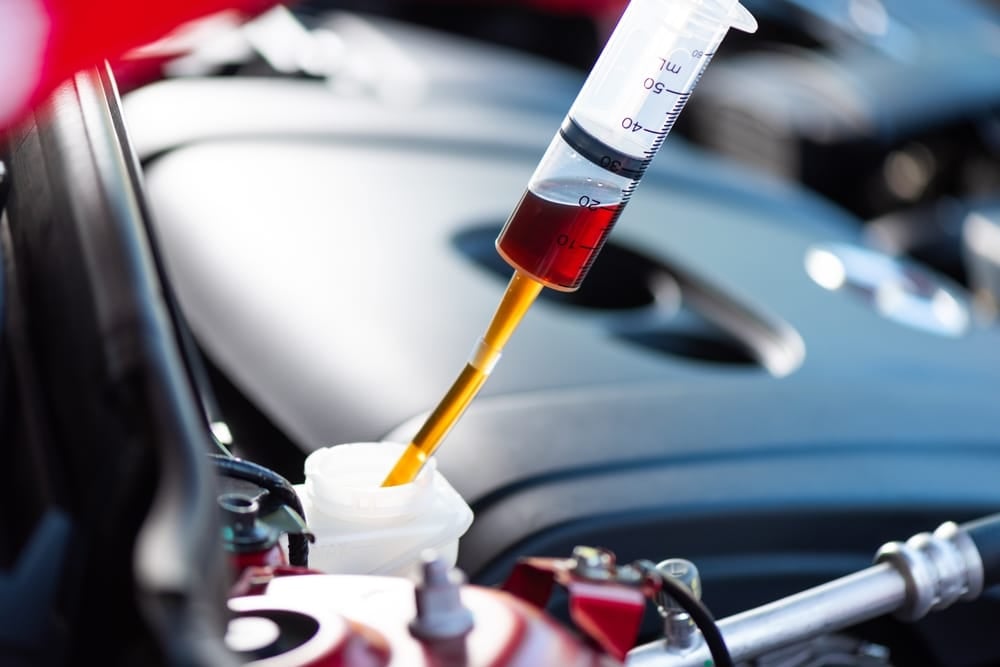
There are several different types of brake fluid. You can tell the difference based on the color and properties. The only brake fluid you should ever use is the type listed in your owner’s manual. They are not interchangeable.
Here are the various types of brake fluid.
DOT 3 Brake Fluid
DOT 3 fluid doesn’t come in just one color. Instead, it can be found in red, blue, yellow and clear. Therefore, you can’t determine this is DOT 3 simply by the color alone.
With DOT 3 fluid, you find a dry boiling point of 401°F. Plus, the wet boiling point is 284°F. What distinguishes this type from DOT 4 is that it absorbs less moisture. Moisture is absorbed out of the air naturally, but this fluid does it at a slower rate. Therefore, you shouldn’t have to change your fluid as often if you use DOT 3.
DOT 4 Brake Fluid
For a few reasons, DOT 4 has become a popular option. It offers higher temperature ranges, with a dry boiling point of 446°F and a wet boiling point of 311°F.
It also has a lower viscosity. Therefore, it performs better in anti-lock brake systems and cars with traction control systems. Most DOT 4 brake fluids are clear with a yellow hue, but some have a red coloring added.
RELATED: DOT 3 vs. DOT 4 Brake Fluid Differences: Can You Mix Them?
DOT 5 Brake Fluid
Normally, DOT 5 is purple. It’s much different than your usual brake fluid because it’s actually silicone. This composition ensures that it won’t absorb water, but it is incompatible with other types. It’s also only used in military applications and some classic vehicles. However, it’s not compatible with anti-lock brakes.
The benefit of DOT 5 is that it can be used in vehicles that are stored. Water absorption won’t take place, so there’s nothing to worry about with the braking system. Plus, it features dry and wet boiling points of 500°F and 356°F.
DOT 5.1 Brake Fluid
Unlike the previous brake fluid, the DOT 5.1 can be used with DOT 3 and DOT 4. It’s usually clear, blue or yellow.
What makes this type different is the high dry boiling point of 500°F and wet boiling point of 356°F. With these temperatures, it’s a great choice for heavy-duty vehicles and high-performance cars.
What Brake Fluid Do I Need?
You can do a lot of damage by using the wrong brake fluid with your vehicle. For that reason, you want to know what you are adding before you put it in the reservoir.
The easiest way to find the right brake fluid for your car is to read the owner’s manual. It will tell you what fluids are appropriate for your maintenance tasks. Additionally, you can look inside the master cylinder reservoir cap. There should be an imprint telling you what to use.
Aside from those tips, here are a few more to consider.
- DOT 5 brake fluid should never be used in a vehicle needing DOT 3 or DOT 4.
- It’s okay to use DOT 4 in a car that requires DOT 3, but not vice-versa.
- Don’t use other fluids as a substitute for brake fluid.
- DOT 5 won’t mix well with glycol fluids in your car with ABS brakes.
On top of that, it’s important to remember that brake fluid can be dangerous. If you spill any on your car, make sure you clean it off because it will damage the finish and paint. You also want to wash your hands and clothing well if any gets spilled on you.
Dark Brake Fluid Meaning
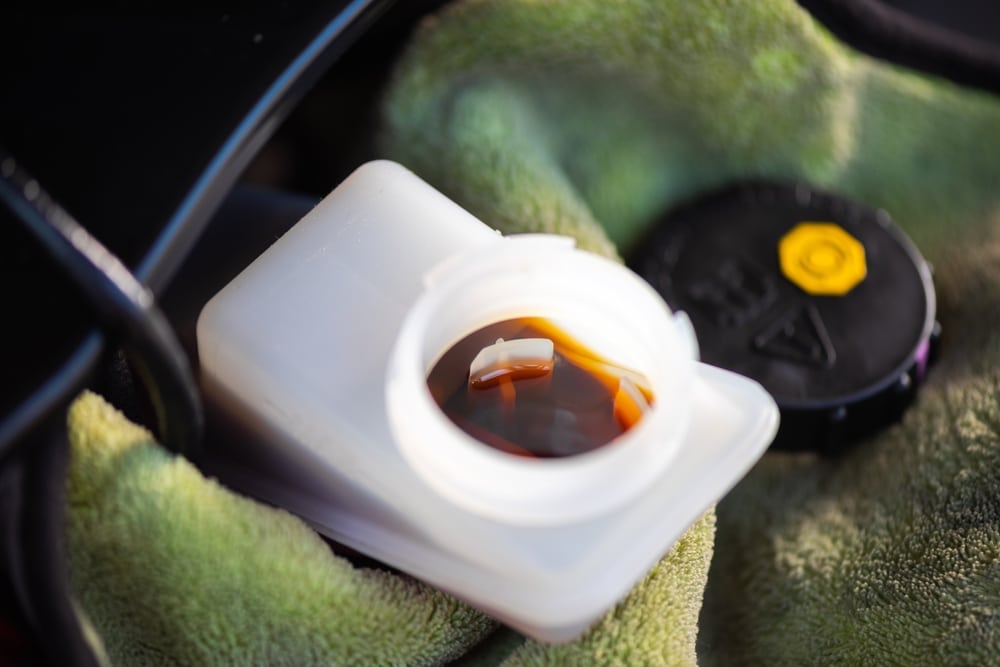
If you inspect the brake fluid and see it’s darker than it should be, you know there’s something wrong. When contaminants build up in the brake fluid, it’s going to get darker.
The darker it is, the more dirt has been absorbed. It could also be caused by water infiltration, which isn’t good either. It’s time to change the brake fluid with fresh fluid.
The Importance of Changing Brake Fluid
When it comes to a car’s maintenance schedule, you’ll see brake fluid changes listed in certain intervals. On average, car manufacturers call for a brake fluid change every three years or 45,000 miles, whichever comes first. You can get your recommended schedule in your owner’s manual.
Here are a few of the most important reasons to stay up to date with brake fluid changes.
- Brake fluid is hydrophilic. Every year it absorbs nearly 3% of its weight, which can cause corrosion and wear on the brake system.
- Brake fluid is also hygroscopic, meaning it draws in air moisture.
- As the brake fluid ages, the boiling temperature decreases, so it doesn’t stand up to the heat the same.
- As the brake fluid ages, it holds pollutants and contaminants that can damage the brake system.
You must also consider the ABS and traction control. These vital safety systems rely on the brakes. If the braking system isn’t working as it should, these two safety features are going to suffer, leaving you at risk.
Furthermore, a regular brake fluid change is going to prevent larger problems from occurring. If you can keep corrosion out of the brake system, you avoid costly repair bills. In this way, regular maintenance acts as an insurance policy against expensive repair bills. Not only that but if something interferes with braking ability, you could lose more than just a few dollars.
Is brake fluid clear or dark?
Brake fluid comes in a variety of colors, depending on what kind you use. It can be clear, red, amber, blue or green. You can see it through the transparent reservoir located under your hood. When the system gets low, you should fill it with the same type of brake fluid.
What color is dot three brake fluid?
Not all DOT 3 brake fluid is made to be the same color. It can be clear, red, blue or yellow, depending on the manufacturer. For this reason, it’s important to carefully choose the brake fluid to make sure you get the right kind. Additionally, you don’t want to mix brake fluid that’s not compatible.
Is brake fluid red or clear?
Brake fluid can be either color, depending on what type you choose. It can also be several other colors, such as amber, green or blue. If you are unsure where your brake fluid reservoir is, reference the information found in your owner’s manual.
What does bad brake fluid look like?
Just like with other car fluids, brake fluid will darken as it gets older. As it absorbs moisture and contaminants, it will start to turn brown or black. You should change your brake fluid before it gets darkened and always follow the recommended maintenance schedule by the manufacturer.
Can you drive with dark brake fluid?
You may be able to drive for a short time, but it’s not good for your car. Once the brake fluid becomes dirty and contaminated, it’s not going to provide the same level of performance. The high-tech ABS and traction control systems may fail to work and you may notice longer stopping times, putting you at risk of an accident. It could also lead to brake system wear that could add up to more expensive repair bills.
As professional mechanics, we can often take for granted what types of fluids are used in the car. Because it is second nature to us, we expect that everyone knows it, but that’s not the case. However, it’s not difficult to learn the differences between automotive fluids. When it comes to brake fluid, this could be one of the trickiest because it’s available in so many different colors.
Still, you can learn the differences simply by understanding where the brake fluid is located and what types it’s available in. If you are ever in doubt, it’s best to contact a professional mechanic for more help.
Categories: Brakes, Maintenance
